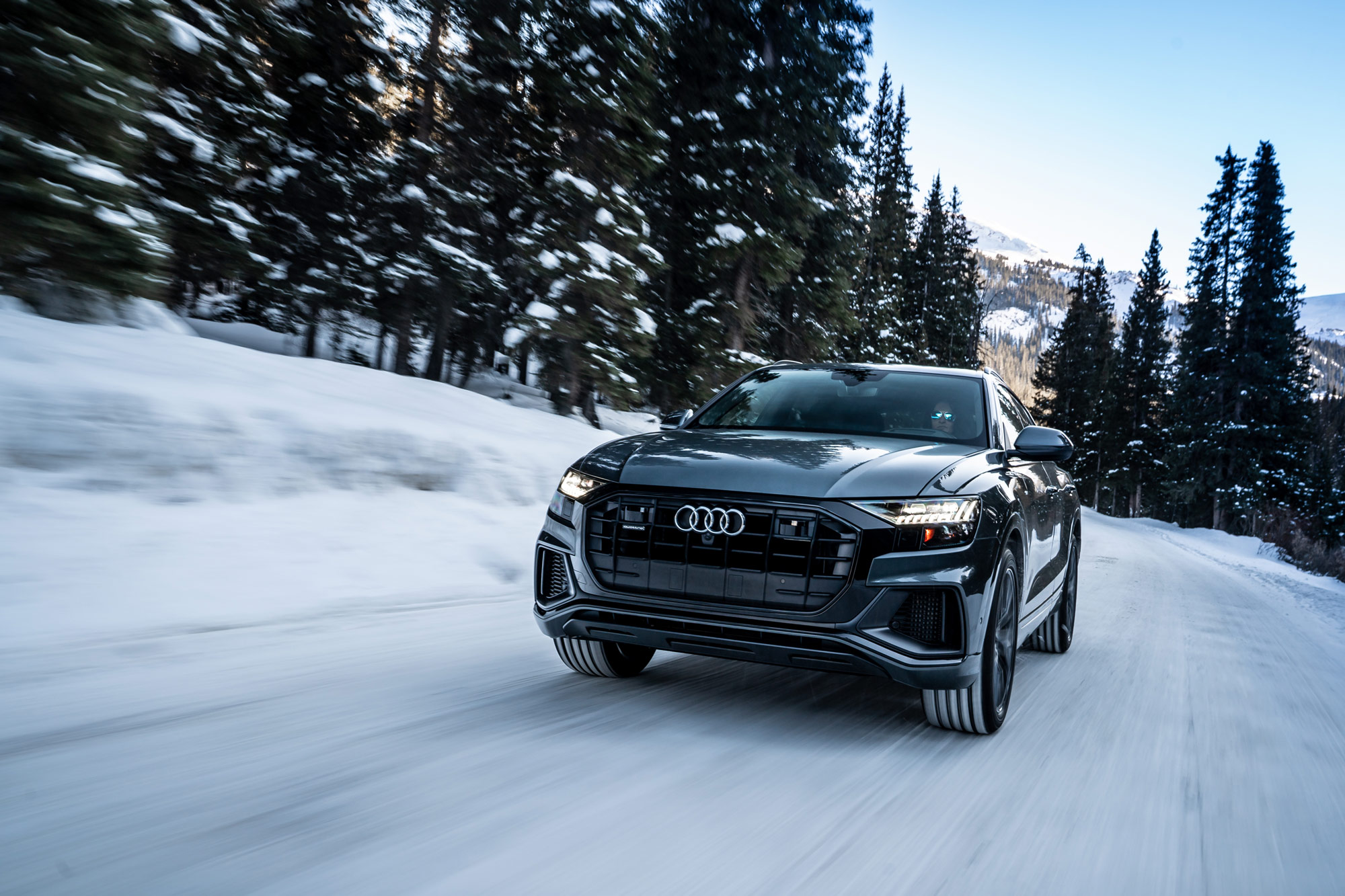What Is AWD?
All-wheel drive supplies torque to each of a vehicle's wheels, helping to maximize traction.
 Audi
Audi
All-wheel drive, or AWD, is a category of driveline systems meant mainly for on-road use. As the name suggests, this drive setup is able to send torque to all of a vehicle's wheels, all at once. Here we'll cover the basics of an all-wheel-drive system as well as the differences between AWD and 4WD.
All-Wheel Drive Explained
There are a number of ways to implement all-wheel drive, including by direct mechanical connection as well as through-the-road AWD on electrified vehicles, and in both full-time and part-time systems. All-wheel-drive systems also range in complexity, with some relying on basic hardware and others employing adaptive electronic control.
No matter how it's set up, an all-wheel-drive system aims to make the most of the tires' available traction, helping get the vehicle through slick and slippery conditions caused by snow, ice, rain, gravel, mud, and sand. Instead of having drive wheels at only the front or rear axle, an all-wheel-drive car can put power down at both ends.
AWD systems generally work automatically, with no intervention required, although some allow user control or adjustment, for instance to change the fore-aft torque split.
Full-Time AWD vs. Part-Time AWD
One main differentiating factor among AWD hardware is whether it's a full- or part-time system. This comes down to whether the system defaults to sending torque to all wheels all the time (full-time) or not (part-time).
Some part-time systems go so far as to completely decouple the front or rear wheels when no torque is being sent their way, which reduces friction losses and therefore improves efficiency. Other simpler part-time systems will keep some unused parts spinning, which, along with the added weight of the system, is why an AWD version of a vehicle tends to get worse fuel mileage than its two-wheel-drive counterpart.
The Difference Between AWD and 4WD Often Comes Down to Marketing
The terms all-wheel drive and four-wheel drive are often used interchangeably, although there is a difference. AWD is mainly for use on the road, while 4WD is better suited for off-road applications. Typically, heavy-duty SUVs and pickup trucks have 4WD systems. These 4WD systems often feature a more robust connection between the wheel, and some even give drivers the ability to mechanically "lock" differentials. While helpful when driving off-road or in situations where traction is severely limited, engaging 4WD — or locking differentials — on dry pavement brings a risk of damage or noticeably compromised driving characteristics while turning.
Manufacturers use their own terms and brand names for various systems, which can make it difficult or confusing when comparing one to another. Audi and Subaru, for example, have both made names for themselves synonymous with all-wheel-drive capability.
AWD Is Useful When Traction Is Limited
All-wheel drive helps get a vehicle moving when the going is tough, and it can help put down a lot of torque in a high-performance vehicle. By maximizing all available traction, it serves as an acceleration aid.
What it doesn't do — and this surprises a lot of people — is provide additional traction when braking or turning. That's where tires appropriate for the terrain and conditions come in, be they knobby all-terrains for trails, winter tires for snow and ice, or summer performance rubber for dry-road grip.
Written by humans.
Edited by humans.
 David Gluckman
David GluckmanDavid Gluckman has over a decade of experience as a writer and editor for print and digital automotive publications. He can parallel park a school bus, has a spreadsheet listing every vehicle he’s ever tested, and once drove a Lincoln Town Car 63 mph in reverse. When David’s not searching for the perfect used car, you can find him sampling the latest gimmicky foodstuffs that America has to offer.
Related articles
View more related articles